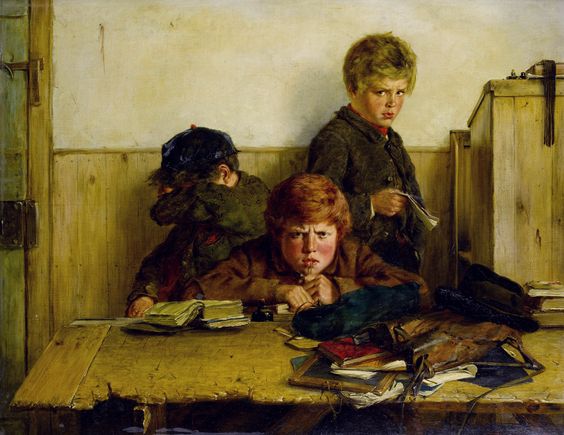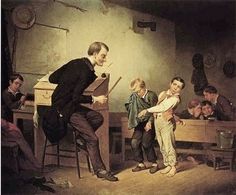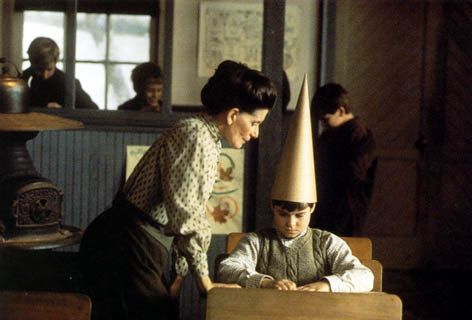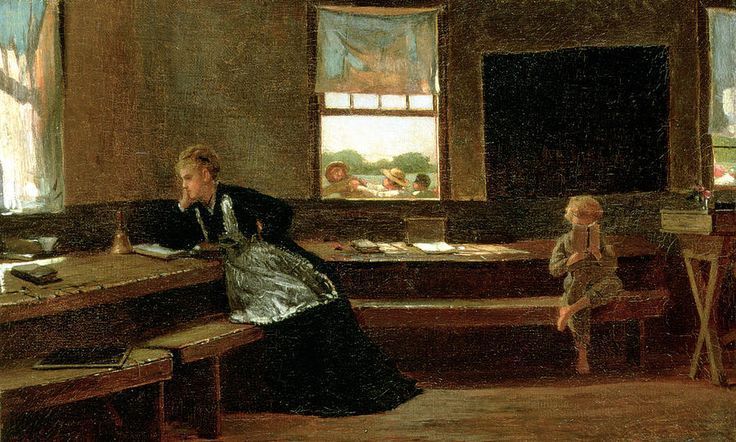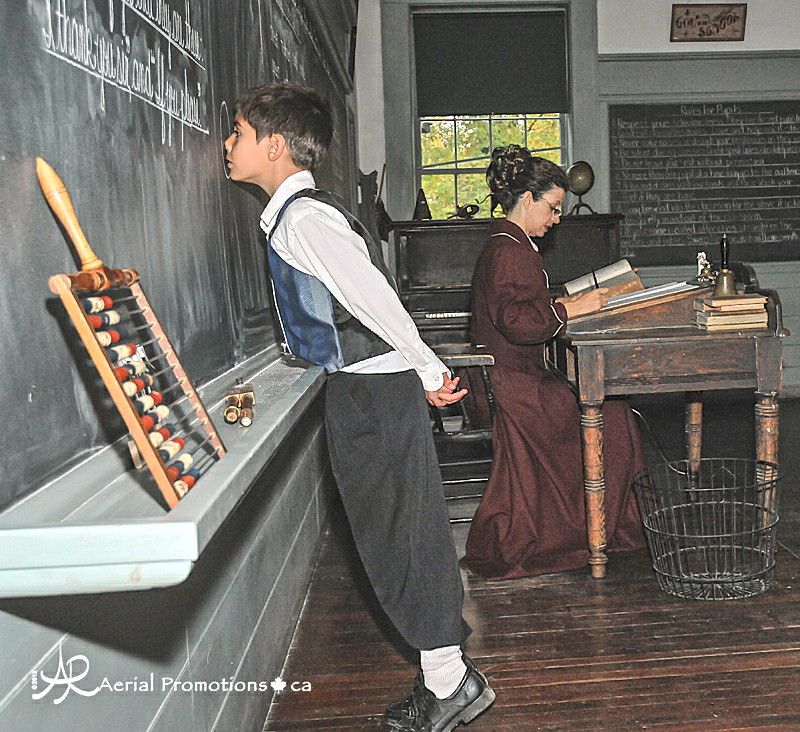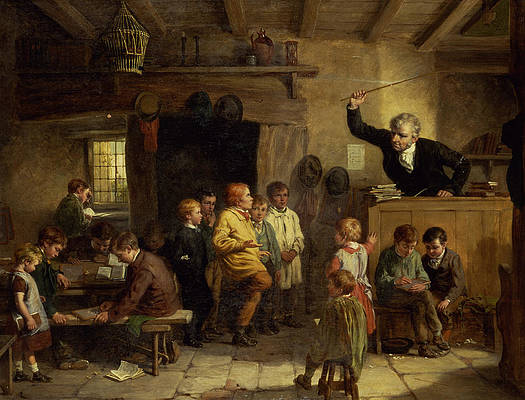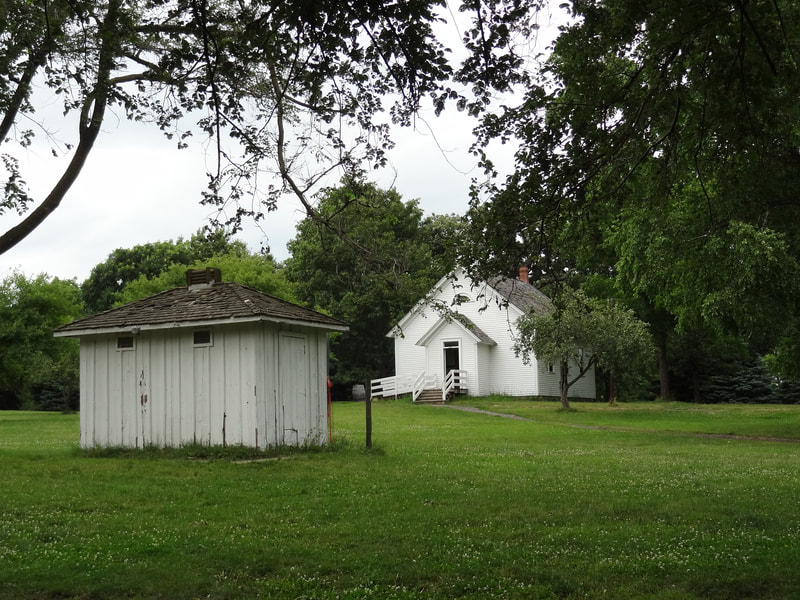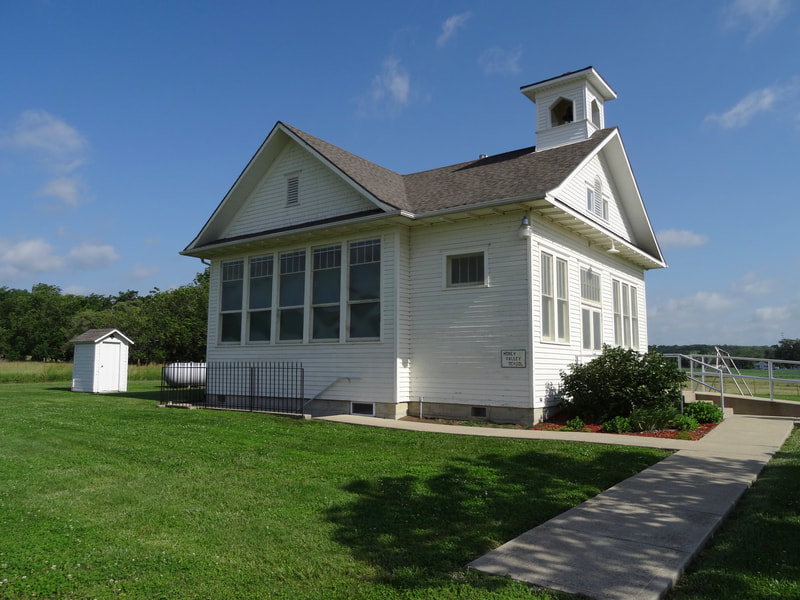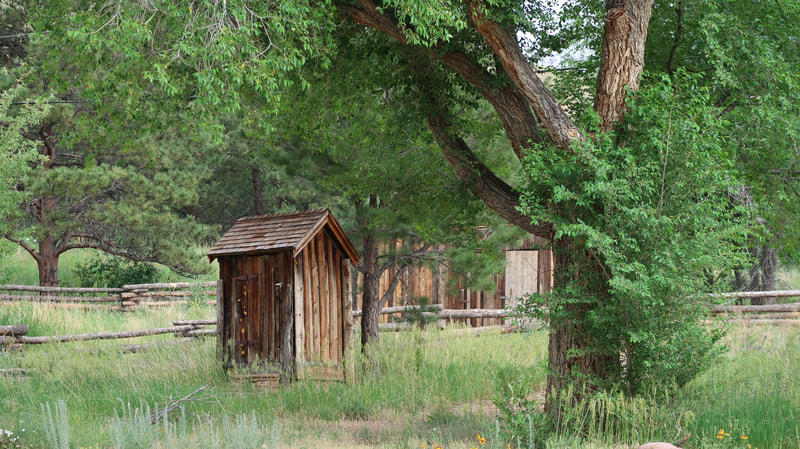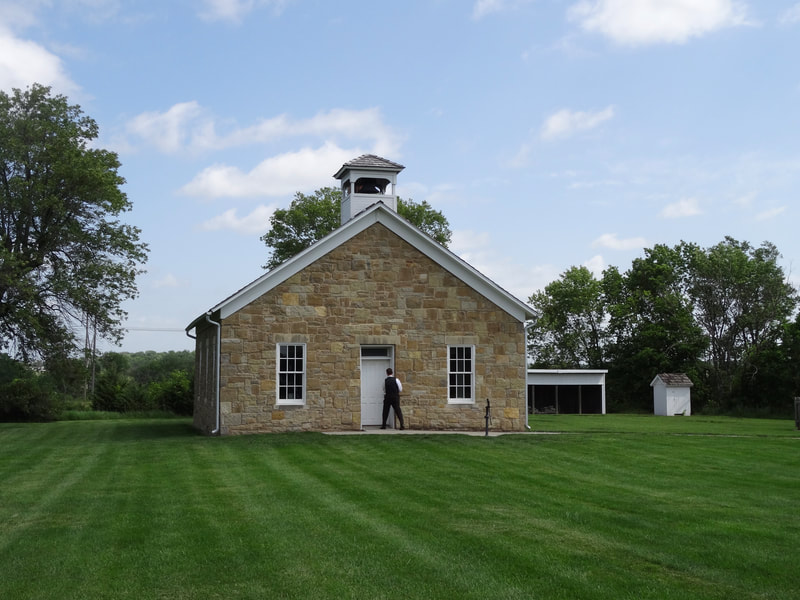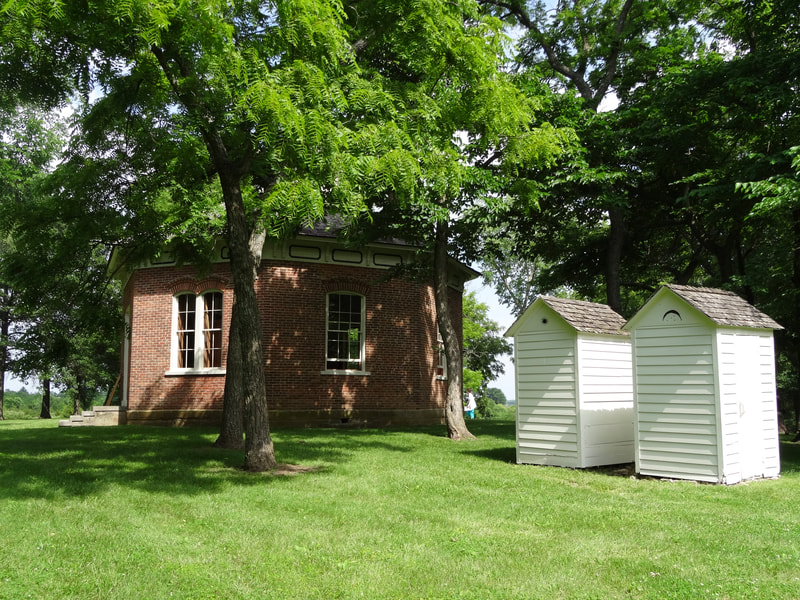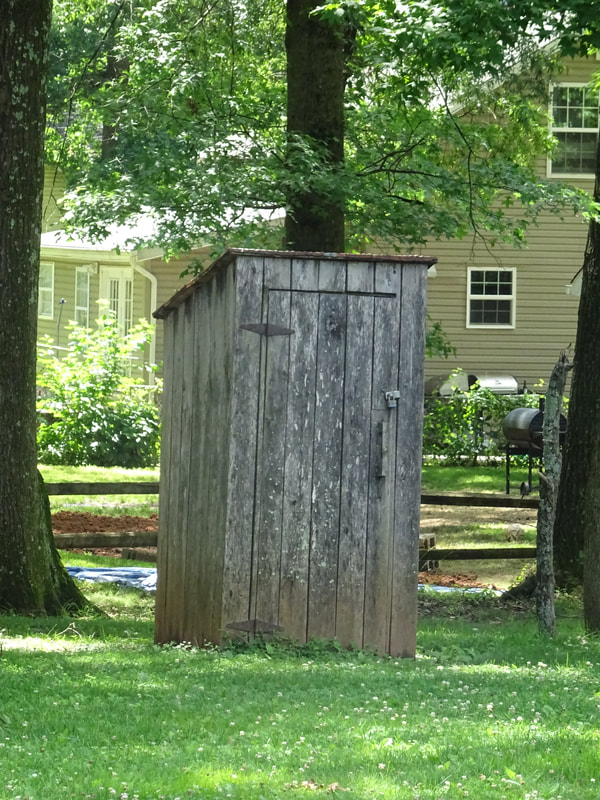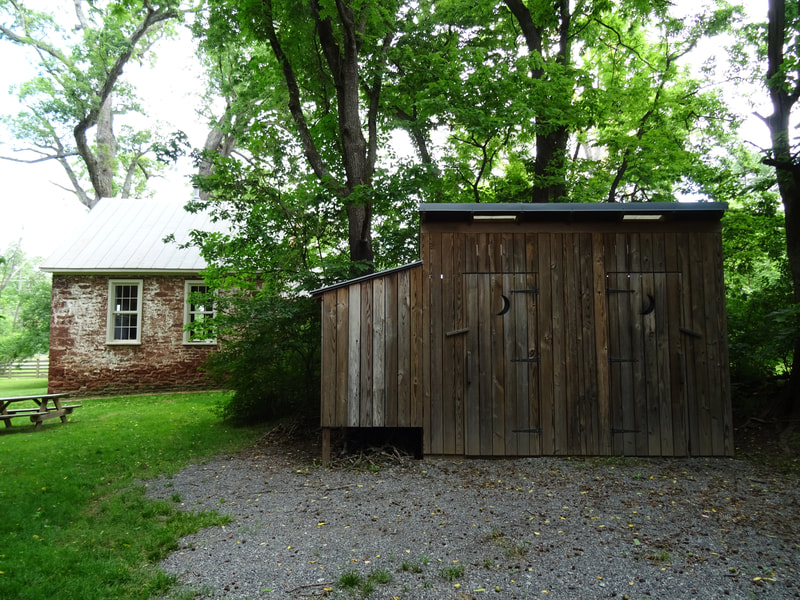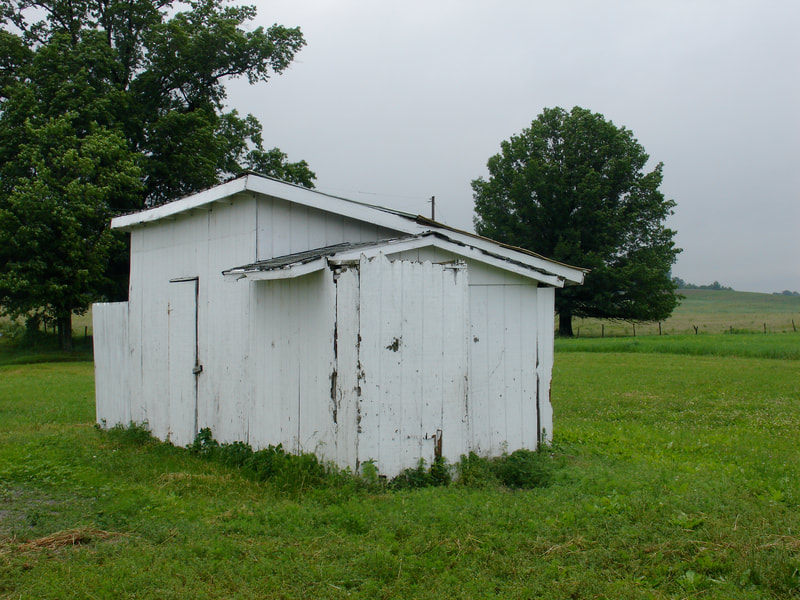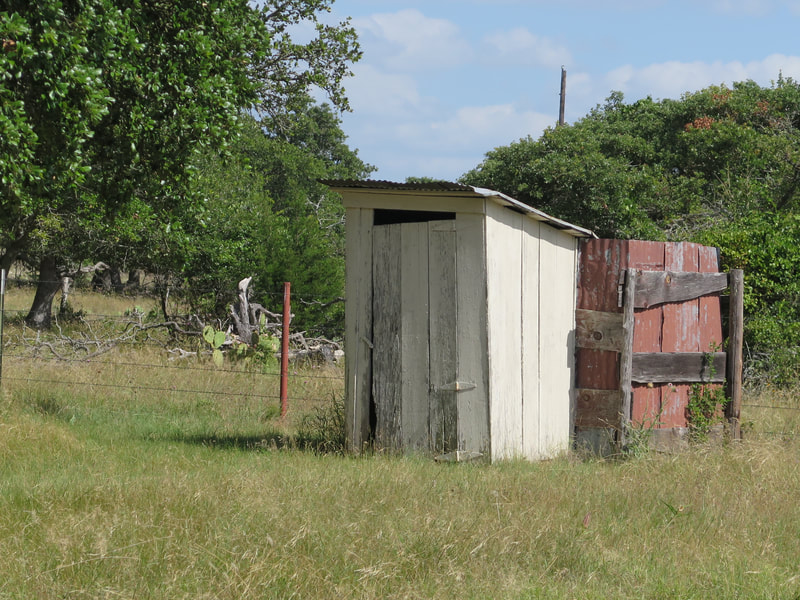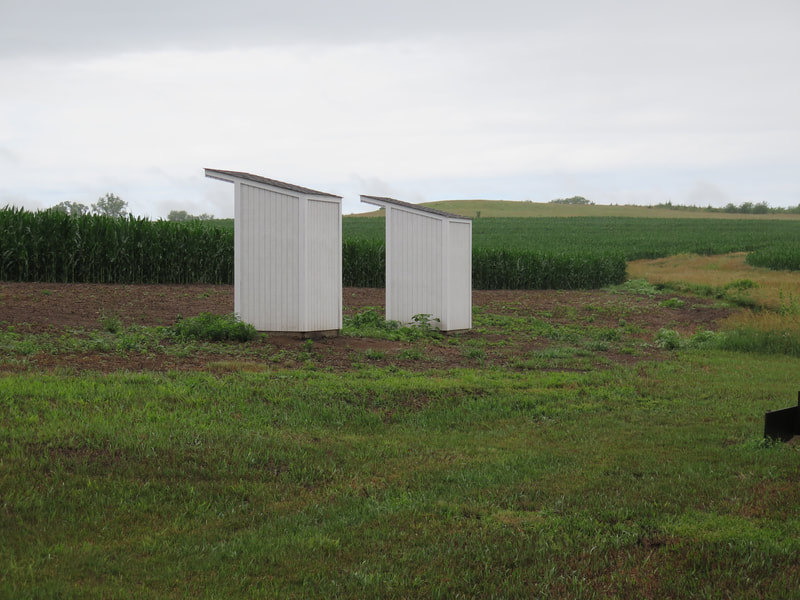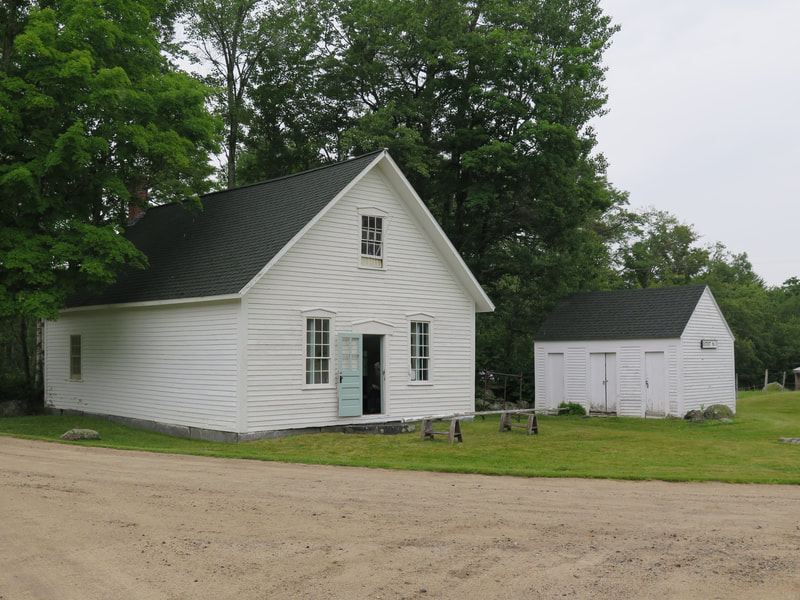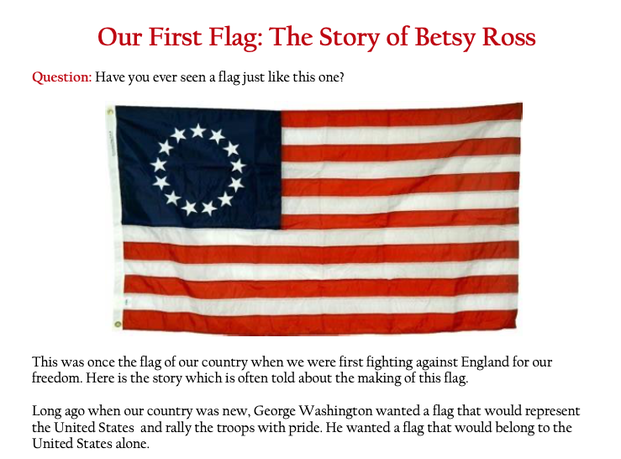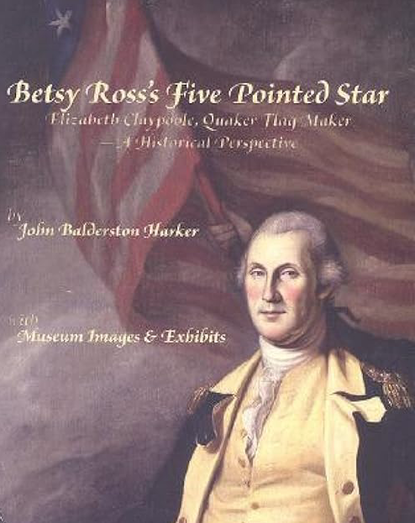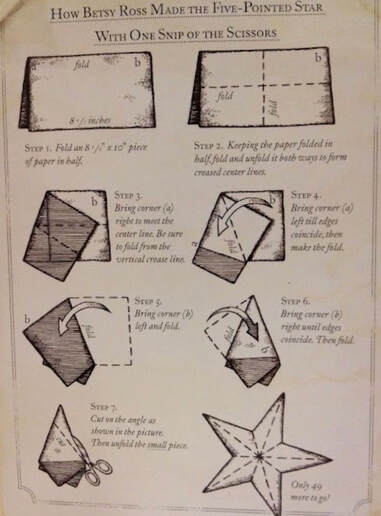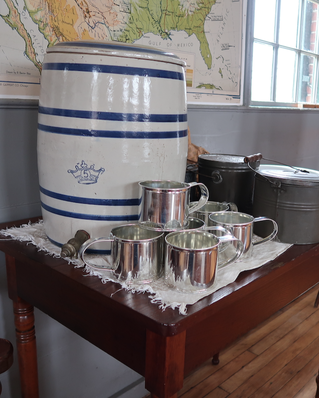|
Question: How many of us knew what a QR Code was before COVID hit and restaurants refused to hand out hand-held menus? That's when we were required to drag out our cell phones, center a QR code, and scroll through tiny little pages to decide what we could order for dinner! It was a learning curve for many of us but at least now we're comfortable with the utility of these strange little blocks of magic that lead us to relevant websites with the tap of a finger. Want to learn more?
How fortunate we are that CSAA member Kristen Tyson of the West Bay Common School Museum in League City, Texas offered a presentation on how to create and use QR codes to enhance the museum experience for our visitors. Her program at the CSAA annual conference in Toledo was the shot in the arm we needed to learn how our own schoolhouse programs could benefit from their creative uses. Kristen's slide show will tell you why they are a terrific tool, explain their many uses, help you experiment with them, and show you how to create them. What a bonus! We thank Kristen Tyson for her creative graphics and her kind offer to share this program with our readers. A Quick Response for Your Museum Visitors! by Kristen Tyson As the next generation visits One Room Schoolhouses, it is vital to find ways to engage them and leave them with a better understanding of the value of schoolhouse museums. Quick Response Codes (QR) are a tool that can connect visitors with valuable information to expand their learning experience. A QR Code is a distinct image that is generated via a website and connects a web address to the code. When a visitor opens their smartphone camera, they simply let the camera “read” the image and it provides a link directly to the website. QR Codes have been used by marketing firms for years, but educators are realizing the value to continue the lesson and even expand on information not easily explained in person. At our schoolhouse (West Bay Common School), we are using QR Codes to provide information about our artifacts. This tool offers a cost-effective alternative to having a guided tour with limited staff, and it allows for additional immersive experiences with audio and video aids. Note: Photos are sample pages of Kristen's lessons.
0 Comments
Happy 4th of July- 248 Years!
Quote by Educator John Orville Taylor in his book, The District School, 1834 “Schools are the depositories of liberty. He who founds a school of instruction establishes the liberty of his country, and he who educates the people makes them free. He who wishes his country to take a high standing among the nations of the earth, he who wishes for the growing improvement of his countrymen, and he who wishes the perpetuity of THIS glorious example of liberty and self-government will desire to do all in his power to educate the people.” And so it should be in 2024. Is it? Are we inculcating the ideals of patriotism and love of country in our public schools as we did in the common school era? Our public schools were founded on the ideals of producing a literate, united, and patriotic citizenry. Love of country pervades the histories of our one-room schools. Daily readings, the Pledge of Allegiance in various forms, national hymns and songs, poetry, and stories of our nation's heroes are all evident as we find lesson plans and journals in schoolhouse records or read memoirs of those who attended our country schools. Lucky for me, a copy of "The Patriotic Reader for Seventh and Eight Grades" (Houghton Mifflin Co. 1917) fell into my grateful hands a while back, a gift from a dear friend. It is one glimpse into the aspirations of our earlier public schools to teach children pride in the United States of America. Yet that practice started long before any book company created compilations. Fostering patriotism was a standard set by communities and teachers from the very beginning of our country schools. Categories in the Patriotic Reader's Table of Contents include: The Origin of Our Country, How We Became a Nation, The Glory of Our History, Our Greatest Leaders Washington and Lincoln. Amalgamation of Races in America, Our Country's Ideals, Our Flag, National Hymns and Songs, and Quotations and Short Selections. EACH category includes countless readings of prose and poetry, speeches, and reflections by famous people. Generations of school children were inspired by stories similar to these. My copy is characteristically well-worn and obviously well-loved. Maybe one of our presenters at a future CSAA conference would tackle the broader topic of country school patriotism...Hmmm.....Any takers?  Post Conference Outreach By Jackie Freeman, CSAA Member, Author Meeting the CSAA members at the 23rd Annual Country School Conference at the University of Toledo in June was a delight. The event was rich with knowledge, and the networking opportunities were exceptional. Though we may only meet in person once or twice a year, the connections we make are invaluable and lasting. After attending workshops or conferences, I make a conscious effort to maintain these bonds. Here’s how I do it: SOCIAL MEDIA: Many of the contacts we make are active on Facebook and Instagram or have websites where we can connect, like, and comment. This not only encourages each other but also boosts our visibility and connectivity. EMAILS OR BLOGS: I keep a list of conference attendees’ email addresses next to my calendar and try to stay updated on events happening in their areas. Staying connected and supporting each other helps us learn more about our new friends. I have attached the latest newsletter from the Wooden Old Stone Schoolhouse to let you know what we have been up to. Let’s keep the spirit of the CSAA 23rd Annual Conference alive by staying in touch. I look forward to seeing everyone at the 24th Annual Country School Conference in Huntington, West Virginia. On behalf of the Wooden Old Stone Schoolhouse Association, I would like to thank you all for your comments and accolades during your bus tour. (Check out the Wooden Old Stone Schoolhouse newsletter attached, Facebook links. We celebrate our 175th Anniversary in 2025, so please stop by if you are in our area. We’d love to see you. Jackie Freeman is one of our newest members of CSAA. She serves as a docent for the Wooden Old Stone Schoolhouse, and as you can see from the photos, she enjoys sharing the history of the one-room schoolhouse just down the road from her farm. She enjoys writing, reading, gardening, pickleball, and spending time with her family. She is the author of eight books, and her next children's picture book is about a little girl who attended the Wooden Schoolhouse. You can learn more at her website: www.jackiefreemanauthor.com. Note: We appreciate member input to The Report Card and hope you will consider sending your own post of interest to our readers. Thanks to Jackie Freeman (in pink below) for her kind thoughts on the benefits of our annual conference. We totally agree and look forward to meeting again next year in West Virginia!  Is There an Electric Salad Bowl in Your Schoolhouse Museum Collection? Opening excerpt by Sarah Uthoff (see full article at bottom) What’s an electric salad bowl, you ask? In the old Gil Gerard version of “Buck Rogers,” there was a scene when he was first shown his new apartment decorated by a historian of the 20th century. Did Buck point out to his friends everything this historian got right? No, he cocked an eyebrow and informed his friends that he didn’t have the heart to tell the historian that the lamp on the table wasn’t an "electric salad bowl." The reasons behind the misidentification were well thought out and made sense, but nothing could get around the fact (to those who really knew) that it just wasn’t an electric salad bowl. It’s easy to laugh, but there just might be some electric salad bowls (things wrongly identified, from a different time period, poor conservation practices) in your collection, too. (CLICK ON THE BLACK BUTTON BELOW FOR FULL ARTICLE- by Sarah Uthoff) Some of our readers will recognize this post! A thought provoking article from a past CSAA newsletter was written many years ago by CSAA member Sarah Uthoff, but it still resonates today. The clever title is intriguing and her questions and observations will have you checking your museum for items/artifacts that simply don't fit. Our schoolhouses that serve up living history to visitors are nostalgic recreations of country schools and we all try our best to offer lessons and activities that are time and materials appropriate. But, some of us might bend the rules a bit if our artifacts have been used at some time during the school's life. For example, many schoolhouses have desks from various eras collected from generous donors and we make do with variety. Exact time periods matched with the exact materials are often a difficult thing to pin down if records don't exist for our school. Globes on display should reflect the era of the schoolhouse, but political boundaries change as we speak. A kind donor dropped off an antique glass butter churner at our schoolhouse...did schoolchildren churn butter in school? As to authenticity, CSAA member Bill Sherman would specifically like to see dunce caps eliminated from our country schools contending that they are more myth than reality. While they appear in European art quite frequently, actual use in America requires more research. Young visitors still think they're a hoot! There are so many things to consider before chucking artifacts from our collections...#1 being we're attached to them and we love them! Nevertheless, have another go at Sarah's article to see if we might want to fine tune things about our collections and our practices.  Evident in many pictures featuring schoolmarms, aprons play a noticeable role in both real life and re-enactment. Checking the web for information on such a common household garment one thoughtful commentary crops up again and again appropriately called,"The History of Aprons." The copy I came across was on a Facebook site called Memory Lane Moments (with no attribution), but in researching found that the original poem was written by Tina Trivett in honor of her own grandmother. Enjoy her tribute to aprons below... "The History of Aprons" By Tina Trivett "I don't think most kids today know what an apron is. The principal use of Mom's or Grandma's apron was to protect the dress underneath because she only had a few. It was also because it was easier to wash aprons than dresses and aprons used less material. But along with that, it served as a potholder for removing hot pans from the oven. It was wonderful for drying children's tears, and on occasion was even used for cleaning out dirty ears. From the chicken coop, the apron was used for carrying eggs, fussy chicks, and sometimes half-hatched eggs to be finished in the warming oven. When company came, those aprons were ideal hiding places for shy kids.. And when the weather was cold, she wrapped it around her arms. Those big old aprons wiped many a perspiring brow, bent over the hot wood stove. Chips and kindling wood were brought into the kitchen in that apron. From the garden, it carried all sorts of vegetables. After the peas had been shelled, it carried out the hulls. In the fall, the apron was used to bring in apples that had fallen from the trees. When unexpected company drove up the road, it was surprising how much furniture that old apron could dust in a matter of seconds. When dinner was ready, she walked out onto the porch, and waved her apron, and the men folk knew it was time to come in from the fields to dinner. It will be a long time before someone invents something that will replace that 'old-time apron' that served so many purposes. Send this to those who would know (and love) the story about aprons. REMEMBER: Mom's and Grandma's used to set hot baked apple pies on the window sill to cool. Her granddaughters set theirs on the window sill to thaw. They would go crazy now trying to figure out how many germs were on that apron. I don't think I ever caught anything from an apron - but love." Soapstone for Our Slatework
One of the best ideas for re-enactment supplies came to me back in 2006 from our friends in League City, Texas. CSAA Board members Catharin and Richard Lewis of the West Bay Common School Children's Museum suggested we use soapstone instead of chalk for our living history slate lessons. Soapstone "slate pencils" are dust-free and last a long time with regular classroom use. They are mainly sold by the gross (144 pieces) and are not easy to find as they are primarily used by electricians, welders, and plumbers to mark pipes. As word spread, more and more schoolhouses have switched to using soapstone for their schoolhouse lessons. Over the years suppliers have come and gone, but we recently located one on Amazon, of all places. My order was delivered in two days. According to Richard Lewis, soapstone was authentic in the latter half of the 19th century adding, "They sold them through mail order catalogs with fancy holders for the 1/4 inch round soapstone like mechanical graphite pencils did the same for draftsmen. The soapstone holders are not available any more though." You'll find that soapstone sure is cleaner than chalk. Most of our living history classes are simple nostalgic recreations and we do the best we can to offer lessons characteristic of the times we represent. Try soapstone...you'll like it! Note: CSAA is not promoting any particular business and does not receive commissions...we're just trying to help! You can also try plumbing /welding/electrical suppliers.  CLICK PHOTO TO READ MEMORIES AND STORIES BY THOSE WHO LIVED THEM CLICK PHOTO TO READ MEMORIES AND STORIES BY THOSE WHO LIVED THEM “Soddies: Down to Earth Country Schools” Here is a photo that generates a host of questions about teaching conditions on the more remote stretches of the Great Plains! How young was this teacher? How substantial was a sod schoolhouse? What was it like to teach and learn in a school made of dirt? What kind of education did the children receive? How did they survive the rigors of the geography and the weather in the communities of the emerging west? Wood planking, logs, adobe, stone, and brick...all were regional building materials used in the construction of one-room schools across America...unless none of these were on hand. To jumpstart the education of their newly settled children, many plainsmen resorted to using the endless grasslands to erect their homes and their temples of learning. “The very first care of the sturdy homesteader of the plains, after a dugout was completed for his family, was a school for his children. School districts were hastily organized and in the absence of money on taxable property, schoolhouses were constructed out of the only material that cost nothing but hard work, the virgin sod of the prairies.”...Friends’ Intelligencer Journal (1903). In the video slide show by Susan Fineman below, hear the stories of pioneer homes and one-room schools, "soddies" made from dirt and grass. It was here that western settlers’ children “drank of the fountain of knowledge,” while enduring Mother Nature’s greatest furies and annoyances. Explore the determination of sod-house communities and the stories of hardy teachers who overcame adversity to produce some of the highest literacy rates in the country. Enjoy vignettes about sod home and school experience in 17-pages of memories, stories, and poems (Click in the photo above to open the PDF). Note: The short program attached was presented at the 2022 CSAA Conference in Golden, Colorado and answers some of the intriguing questions asked above. Attending an annual conference offers countless programs of interest to country school enthusiasts. We encourage you to present or attend a future conference with 2025 planned for West Virgina. Stay tuned on this website for information and conference updates. Best Deal All Around for Country Schools
If you found us on Facebook or by chance, thanks for tuning in! This is not one of those heartbreaking pleas for your membership like on TV, but an invitation to support a cause we all enjoy...preserving and restoring country schools across America. How unique! We're certainly a niche effort. CSAA uses your membership fee to offer grants and awards to schoolhouses who need help with an ongoing restoration project, recognition for innovative instruction, rewards for deserving schoolhouse volunteers, awards for writing or video projects, and disaster relief for schools that Mother Nature has damaged. It's also an easy process to join CSAA online or to make a donation if you're so inclined. Every cent goes to organizations or individuals involved in saving schoolhouses. Think about it and if you think it's a worthy cause we know we'll hear from you. We're also pretty generous with free advice, interesting articles, resources for re-enactment, the collective wisdom of our membership, an annual conference coordinated by volunteers, and a whole lot of information on country schooling across the country. Try us, you'll like us!  People sure do love their schoolhouses and we can prove it! Each year the Country School Association of America invites schoolhouse enthusiasts to apply for the CSAA's Awards for Scholarship and Artistry for the best essay, book, website, video or other published work on an aspect of country schooling. The winners are invited to the June conference where they are recognized with a certificate and $300. Attendance at the conference is not required to be awarded the prize, and this year in Toledo, four winners were announced. Congratulations to our 2024 recipients! (1) "The Happy Little Schoolhouse" by Debbie Soto This illustrated children’s book tells the story of the Santa Rosa Schoolhouse in Cambria, California. The schoolhouse is the main character telling its own story from being built in 1881 through all the major events including the Santa Rosa being moved twice by a large crane. It highlights the happy years with children attending school sessions and the years of abandonment, then the moves and revitalization with children once again returning to the school. In this delightful hardcover book the illustrations are engaging and colorful, and some pages incorporate vintage photos of the school building. This is the first ever children's book recognized by CSAA since we began these awards, and we highly recommend it for your children and grandchildren! The author, Debbie Soto, invites you to request a copy through her email at: [email protected]. (2) "Resurrecting Forest Grove" (DVD) By Fourth Wall Films, Kelly and Tammy Rundle This Emmy Award winning documentary film cinematically tells the dramatic true story behind the seemingly-impossible task of restoring a vintage one-room school to its 1920s appearance. Footage and interviews gathered over a seven-year period depict the problems they faced and the solutions they employed as they attempted to bring this rural icon back to life. The surprises and successes of this challenging restoration project are intercut with a vivid historical portrait of the 'Roaring 20s' in rural America. Available for preview and/or purchase the link below: (3) "Calloway Chalkboards: Remembering Calloway County's Rural Schoolhouses" by Kingdom Of Calloway County Historical Society -Fulton, Missouri Here is well-organized collection of schoolhouse histories of the 144 rural schools in Callaway County. It serves as the only published historical source of both black and white country schools which spanned the years until 1973. Much of the history was destroyed decades ago to make more storage room for other records. It was dedication of one local man who painstakingly made handwritten notes in the 1980’s-90’s as he combed through numerous documents that allowed for this history to be saved and re-compiled! Contact information below: (4) History and Heritage: Iowa's Lee County Rural Schools By Diane Kruse
Diane Kruse spent more than a decade researching and writing about the history of the Lee County Rural Schools. She includes information about the first public school that began operating in the Iowa territory before Iowa became a state. This is a very large volume with a vast quantity of history for the dedicated researcher. A note from Diane Kruse: Additional copies of my book have been ordered and are expected to be delivered by the second week of June. If anyone would like to purchase one I can be contacted at my email address [email protected]. Please list your name and telephone number so that you can be contacted when the books arrive. The cost of the book is $65. If you wish to have the book mailed to you an added charge of $7 will be added for media postage. Serendipity is all we can say here. In exploring the web for schoolhouses recently, a reader came across a Wordpress blog entitled, "Walkerhomeschoolblog," and discovered that the writer has researched and posted articles on countless country schools from across the U.S. He includes working one-room school museums, multi-room schools, repurposed buildings, and abandoned country school relics. He includes photos and physical or mailing addresses for the schools he features and adds that, "I gather my information from many sources."
The writer of "Walkerhomeschoolblog" does not identify himself but says, "I am a minister and homeschooling father who is interested in the promotion of homeschooling and also in listening to classical music." It appears his blog goes way beyond his description and is of great value to those seeking information on countless unknown schoolhouses in the 50 states. Below is an example of his many entries. Coincidently, attendees at the 2015 CSAA conference in Beatrice, NE visited the Cracker Box Schoolhouse (below) as part of the Wednesday coach tour of local country schools. Your Pre-Conference Information "At-a-Glance"  CLICK ON THE FLYER FOR CONFERENCE INFORMATION CLICK ON THE FLYER FOR CONFERENCE INFORMATION If you are registered for the 2024 CSAA Country School Conference in Toledo, this is the information you've been waiting for! (Printable) We look forward to seeing our friends in the history, preservation, and restoration world... of schoolhouses! Here you will find: -"At-a Glance" Program Schedule (Detailed 12-page version will be in your conference tote at registration.) -Arrival information at the University of Toledo. -Registration Information. -Dorm check-in (hotel style). -University of Toledo Campus Map. -Parking Information. -Area Attractions with links to short videos. -Meet and Greet Reception. Maybe We'll See You in 2025?
Registration closed this past week to attend the 23rd CSAA Annual Country School Conference in Toledo, Ohio. Alas, we hope you can join us in West Virginia or Upstate New York in 2025. We will post confirmation of the venue for 2025 after the Toledo conference and hope you'll consider attending. In the meantime, consider a membership in CSAA for $35 a year to support our efforts at preservation. Each year CSAA holds the event in a different state at a unique setting, generally a college or university. Below is a listing of schoolhouse conferences before and after CSAA's official national launch in 2006 as the Country School Association of America. Hear from 20+ presenters on a range of schoolhouse topics each year and take the tour of local schoolhouse museums. Everyone is welcome! Meet new friends who share a unique interest...the heritage of our first public schools and the buildings that remain as living history museums. Continue browsing our website and find out all the things we do to support the history, preservation and restoration of our one and two-room schoolhouses across America...  Ward Township School #5 Ward Township School #5 Readers Seek Hands-on Lessons for Living History I love it when CSAA receives emails like the one below...Why? Because we know we can help! "I am a board member of a one room school in Randolph County Indiana. We redid most of our school. We are now looking for school programs that we can use in our school. Our school is Ward Township School #5 . It's a beautiful school and we look forward to educating kids on how it was in the past. Thank you, Brant Jones While thinking of what a wonderful article this restoration would be on "The Report Card," I immediately sent Mr. Jones the last publication created by our own, Susan Webb, designed with loving attention and detailed instructions for use in one-room school museums. How timely someone wrote for such help. This little booklet is a gift to all us from Susan before she passed away in 2023. In this hand-made lesson book Susan thought of everything you need to create a successful program for visitors including activities for BEFORE, DURING & AFTER a country school field trip. It can be adapted to any grade level with its clear instructions and hands-on activities. I needn't list the delightful ideas she researched and shared freely, since you will be able to access her manual here. "LOOK WHAT WE CREATED IN THE SCHOOLHOUSE TODAY." by Susan Webb, The Traveling Schoolmarm The booklet is offered here in two pdf's, Part I and Part II for copying and emailing. Some pdf files are too large to email and not all people have Drop Box etc. (I have been successful in emailing both parts at the same time though.) Please share this to help other schoolhouse programs in need of fresh ideas! Each picture leads to half the booklet. PART I BELOW PART II BELOW BTW...I will follow up on the enviable restoration of the Ward Township #5 Schoolhouse in Randolph County, Indiana in a future post. It is spectacular.  ELEANOR ENT- NATIONAL REGISTRY RECIPIENT ELEANOR ENT- NATIONAL REGISTRY RECIPIENT It was a dream come true for one of our dearest CSAA members in Pennsylvania having her schoolhouse listed on the National Registry of Historic Places. Ellie Ent's historical Concord Schoolhouse is an authentically restored “learning-living” school museum located in Westmoreland County, Pennsylvania. In 1848, local families of the surrounding area built this independent school to educate their children. Today, this school museum exemplifies early rural American education, while it offers visitors the unique feeling of being in an actual one-room school. The Concord School was completely restored through the efforts of the late Mrs. Ent who privately preserved this school upon purchasing the farm where her schoolhouse is located. The restoration took several years and many local craftsmen and family members returned the school to its original condition. In 2014 the the Concord School was listed on the National Registry of Historic Places. A local celebration hosted by the family that year brought out scores of friends and CSAA members to honor Ellie and her achievement. Mrs. Ent's daughter, Dr. Veronica Ent, opens the school and museum to private groups and organizations. Sadly, E.C. Ent passed away in 2023, but we remember her laughter, her enthusiasm for our annual conferences, her devotion to the Concord School, and her endearing personality. For more information, visit the Concord School website below. Veronica shared a video slide show on the Concord School as part of our 2021 CSAA Annual Conference, held virtually during the pandemic. You can now enjoy this video here!  One of the perks of attending an annual CSAA conference, besides the obvious camaraderie, is coming away with fascinating schoolhouse history. Held in a different state each year we gather information we may never have considered or even heard of. In June of 2018 we met in Beatrice, Nebraska at Southeast Community College and were hosted by National Park Rangers at the Homestead National Monument. The monument is spectacular and the museum exhibits are models of excellence. In Nebraska we examined the rich history of hearty pioneers who were granted parcels of land for very little money under the Homestead Act on the condition that they farm it and improve it. Thousands took advantage and the settlement of the Great Plains is the rest of the story. Building and maintaining country schools would serve as an anchor to these communities, but pride in educating their children would turn to tragedy for many families in the unexpected arrival of a snow storm on January 12, 1888. Not just a mid-west snow storm... Amidst the stories of struggles and survival this fascinating tale was offered by one of our keynote speakers, David Laskin, author of one of two definitive histories of the monstrous multi-state blizzard in his book, "The Children's Blizzard." According to Laskin, "This epic prairie snowstorm killed hundreds of newly arrived settlers and cast a shadow on the promise of the American frontier....many of the dead were schoolchildren who had perished on their way home from country schools." Historians rank the so-called Children's Blizzard of 1888 as the most severe to ever hit Nebraska. It has been labeled a meteorological catastrophe and is ingrained in the story of the Great Plains. Stories of survival... Of greatest interest to our attendees were the stories of how the teachers, children, and parents played out their roles to survive the unprecedented conditions that befell them in a matter of minutes...and then hours. We learned of children getting lost three feet from each other in blinding conditions, holing up in dug out haystacks, lashed together by ropes to follow fence lines home...or burning school furniture to survive the night while huddling in their schoolhouse. Rescues either succeeded or failed. It goes without saying that if this post has piqued your interest, we certainly recommend Laskin's book (published in 2004) so detailed in its storytelling. The limited science of meteorology at the time, the anatomy of the blizzard itself, the life of the homesteader, the decisions made and regretted, the heroism by those most unlikely, the sad losses of life, and the miraculous rescues are all woven into the chapters. As the nation came together to mourn the dead and offer assistance, lessons were learned, memories were shared, and the resilient pioneers would persevere, but never forget. Laskin's summary of the aftermath is as riveting as the unfolding. This a must read for schoolhouse enthusiasts. Another definitive compilation of blizzard stories (available as a used book) was published in 1947. The book entitled, "In All Its Fury: The Great Blizzard of 1888," is described on its back cover: "Some years after the storm, W.H. O'Hare of Laurel Nebraska (one time speaker of the Nebraska House of Representatives) formed with others the January 12, 1888 Blizzard Club. In 1945 members of the club began collecting stories of the blizzard from all over the midwest. These accounts of heroism and courage on the Great Plains were first published in 1947. They are reprinted here to commemorate the 100th anniversary of the great storm and the final meeting of the Blizzard Club on April 9th, 1988." If you'd like some quick articles on the story, try these for good summaries. Also two links to the best blizzard books. Discipline in Early One-Room Schools: From Cruel to Creative
When working with “scholars” in a living history program, oftentimes some of the most animated and specific questions from the students center around one topic—discipline. Students are intrigued by the relics of corporal punishment and they zero right in on the "hickory stick" and the paddles of various sizes we may display as artifacts. They are shocked at the public embarrassments they learn were inflicted on scholars in the early district schools of America, yet find some others laughable. The ability to maintain discipline was always viewed as the key to successful teaching and teachers were regularly evaluated by their ability to maintain control and administer corporal punishment as necessary. Early district school teachers were often feared or revered depending on their reputations as brutal or benevolent disciplinarians. Over time, reformers promoted a kinder and gentler approach to modifying classroom behavior, but some practices lingered into the 20th century. Here we offer an article by our CSAA friend Mike Day that is reprinted here from our former CSAA newsletter. The article is telling and still very useful as we research the practices of how old time country schools maintained order. Thanks again to Mike Day! Proud of Our Privies: Need Some Reading Material?
It is interesting to note how proud country school preservationists are when they say their schoolhouse still has the "original privies." Sometime back, a visitor to our website asked if we had any information on how to build a "two-holer." Our members came up with some very interesting answers proving they have some particular knowledge of these rustic "throne rooms." Richard Lewis of West Bay Common School Museum wrote: “If you want better quality and better choices of plans, you may want a book entitled - The Vanishing American Outhouse: Privy Plans, Photographs, Poems, and Folklore, by Ronald Barlow. Mike Day wrote, "There is a delightful little book that I would recommend to anyone thinking about privies; it's called "The Specialist," by Charles (Chic) Sale, copyright 1929, renewed 1956. It appears to be a speech by a man who is quite proud of the special skills he has developed in his particular line of work, the design and construction of outhouses. I'm not sure just how seriously to take it, but it does cover many of the fine points that us modern types would not know to consider when building an outhouse. It's a cute little book - 27 pages - and a number of copies are available from Amazon. Not really a schoolhouse book, but fun anyway. Fay Stone of the Pioneer Sholes Schoolhouse wrote: "Privies were usually a simple tall box with no windows but a design (often a new moon) cut high in the door for light. The roof was slanted to allow snow and rain to run off. The important thing was the two holes. A considerate builder would make one side lower than the other, for smaller people, and the hole smaller for obvious reasons. Sometimes they had a lid, but rarely. I doubt there was ever a written plan. If I were making one for use today, I'd include a simple hinged lid, as it cuts down on odor. We dug in a large metal barrel split into half under the holes, and they were pumped out often by the caretaker or garbage crew. We built a fence between boys and girls and planted a vine along it." Recollections about school privies abound, but a recent post in the Washington County, WI Outsider (March 25, 2024) by Dave Bohn of West Bend, Wisconsin was also instructive. "There was an outhouse behind the school near the woodshed. We would have to bundle up in the winter to go out and use it. In cold weather, not too much time was spent in the outhouse. The toilet was a two-holer without any partition in between. It was just a plank seat and the area between the two holes was maybe a foot. I don’t ever remember using the outhouse with another kid in there, but maybe the second hole was a slightly smaller size for the little kids. I don’t really remember though. The toilet paper was yesterday’s newspaper. Lime was used to keep the smell under control. The lime was poured down the hole every few days. This helped absorb the odor and helped compost the contents of the outhouse. Using lime was common for all outhouses at the time. Lime is a stone crushed really fine and the stone was very easy to come by, as there was a lot of limestone in the area." Research has been done by others already, so enjoy your journey through the story of buildings that have always been "necessary." Here are some suggestions found on Amazon, Abe Books or Alibris: Passing of the Outhouse, by Tom G. Murray The All-American Outhouse: Stories, Design & Construction, by Bob Cary Nature Calls: The History, Lore and Charm of Outhouses, by Dottie Booth (Very Funny!) Outhouses by Any Other Name, by Tom Harding Ode to the Outhouse: A Tribute to a Vanishing American Icon by Roger Welsch Outhouses, by Roger Welsch Flushed with Pride, The Story of Thomas Crapper by Wallace Reyburn Outhouse Humor, by Billy Edd Wheeler In researching the books, we found that outhouses have many other supporters out there, as evidenced by a calendar, a shower curtain, a rustic sign with outhouse rules, and hand towels with an outhouse motif. Good luck in your research! 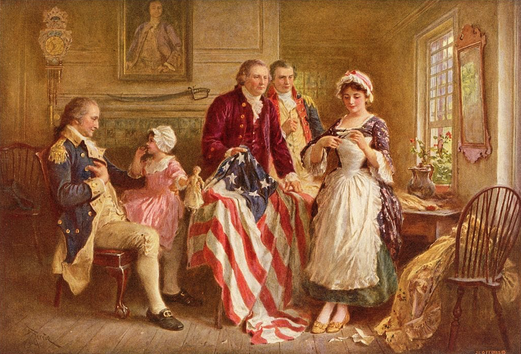 Betsy Ross for Your Opening Exercises Our living history museums are places where we can still offer a lesson in patriotism cloaked in the rich tradition of all of our country schools of the past. The Pledge of Allegiance was a staple among our country schools and continues today as the go to statement of love of country. If your schoolhouse pre-dates the Pledge of Allegiance, opening exercises would have been different than those post-1892. Why? The Pledge of Allegiance to the Flag of the United States was first published in the juvenile periodical The Youth’s Companion on September 8, 1892, in the following form: “I pledge allegiance to my Flag and the Republic for which it stands; one nation indivisible, with liberty and Justice for all.” Presenters at CSAA conferences have schooled us in the history of the pledge noting controversies over authorship and the various changes made over the years. These CSAA presenters, including Maureen O'Connor Leach and Susan Webb offered us the background for how we might use the proper rendition of the pledge for our re-enactments. Their programs were longer and more fascinating than space allows on this post but we could convince Maureen to share her research here one day on The Report Card. (Note: Attend a CSAA conference and find many intriguing presentations each year!) Earlier schoolhouses may or may not have had a flag displayed since the big push for visibility in schools came after the 1892 pledge was introduced. For opening exercises, schoolmarms and schoolmasters often relied on short history vignettes of bravery, loyalty, or patriotic duty designed to raise the consciousness and virtues of our future voting citizens. For example, often invoked were Washington crossing the Delaware, Lexington and Concord, Patrick Henry's, "Give me Liberty or give me death!" Lincoln's Gettysburg Address, or "Remember the Alamo!" Another more common theme related the traditional story of our first American flag, the so-called Betsy Ross flag....and its notable creator, Betsy Ross. Our First Flag: The Story of Betsy Ross If this sounds like something you might like to include in your living history program, here you'll find a synopsis of the accepted story of how Betsy was chosen by George Washington himself for the job of creating our first American flag. Fact or fiction has been debated, but it's mostly accepted that Betsy Griscum Ross Ashburn Claypoole played a significant role in the design of our first American flag prior to its evolution from stars in the round to rows of five-pointed stars on a canton of blue. (The background story of her marriages is also interesting!) 1. Our First Flag- The Story of Betsy Ross - CLICK ON THE BETSY ROSS FLAG. 2. Cut a 5-Pointed Star-CLICK ON THE TAN PICTURE. 3. YouTube Video -CUT AN ORIGAMI STAR...easier. CLICK ON THE BLACK BUTTON. Also included is a recommendation for a definitive history book of the event in question that offers a volume of evidence (CLICK ON THE BOOK PICTURE). It is a fascinating look at Betsy and other notables who directed the design that would serve as a symbol of an emerging United States.
Does Your Schoolhouse Have a Virtual Visit Video? In 2021, when our CSAA members were homebound and fighting off COVID 19, we opted to hold an on-line conference in lieu of our annual in-person event. The 22 presentations proved to be a huge success, and in place of the annual "COACH TOUR OF AREA SCHOOLS" we were treated to an "EASY CHAIR TOUR" of some our participants' schoolhouses. By way of these virtual video tours, we were able to hear the stories of their history, preservation, restoration and programming. It was a way of stepping inside the very schools we might never get to experience. Our videos might be homespun or created professionally, but all are informative and entertaining. As different as they are, they will spark ideas about how to make your own one-room school virtual visit, promotional video, or slide show. Taylor #4, Marshalltown, Iowa This month we will highlight Taylor #4 in Marshalltown, Iowa produced and narrated by CSAA member Julie Lontz Lang. Julie was an early savior of the schoolhouse and has successfully re-created the year 1913 in this wonderful museum school. Turn your clocks back to 1913 and spend a day with your schoolmarm at Taylor #4. The school is furnished with fixtures and equipment from Marshall County schools and depicts a typical Iowa educational experience of the era. Beautifully restored and maintained, this is an authentic school day where students experience all subjects taught straight from the 1913 Taylor register. To their great delight every child in Marshall County, Iowa has experienced this free program for the past 17 years. You will no doubt use many of these ideas for your own living history program. Enjoy your tour! Video production by Julie Jontz Lang and Rita Smith. Taylor #4, 60 N. Second Ave., Marshalltown, IA Our Email: [email protected] Our Website:www.marshallhistory.org Julie Lang loved teaching fourth grade, in Marshalltown, IA, for 34 years (BA and MA in Education). For 28 years, she's been a volunteer housewife at the 1900 farm at Living History Farms in Des Moines and has been active in her local historical society for many years. In 2005-2006, Julie became the volunteer director of Taylor #4, a 1913 one-room school, and restored it back to its original appearance. After much research, Julie wrote the reenactment curriculum and started the free, full-day, authentic 1913 living history program. Rita Smith, who also leads re-enactments, and Julie Lang are proud to have had every fourth grader in their county (plus home-schoolers) participate at the schoolhouse for the last fourteen years. Unfortunately, year fifteen was pre-empted by tornado damage repairs and COVID 19. Rita Smith, after 18 years of teaching second and fifth grade and many years of subbing, was happy to teach the Taylor #4 re-enactments (BA and MA in Education). Loving history and teaching children makes this a perfect fit for Julie and Rita who truly make schoolhouse history come alive. Their program proves it! |
Our early public schools systems were indeed disparate, but a common thread among early districts was that children of all ages were taught together in the one-room schoolhouse" Blog Archives
July 2024
|















































